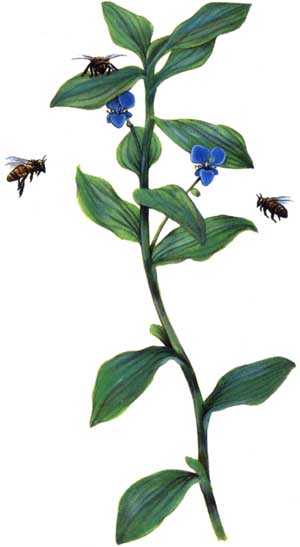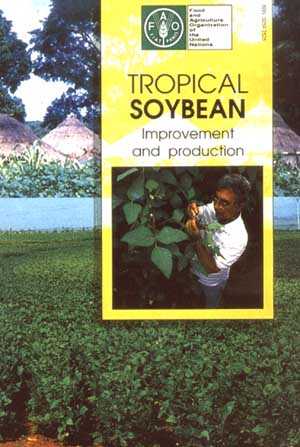Letters to the Editor
We Zed IT incorrectly
One of the sources cited at the end of Peter Oakley's article ("Bottom-up versus top-down: extension at the crossroads," No. 145) was in error. My book, Farmer first: farmer innovation and agricultural research, is published by Intermediate Technology Publications Ltd., not Zed Books as listed.
Robert Chambers
Institute of Development Studies
Brighton, England
Ed. Note: Pardon our error. The book may be ordered from: Intermediate Technology (IT) Publications Ltd., 103/105 Southampton Row, London WC1 B 4HH, U.K.
Impressive harvest
As a regular recipient of your publication, I am particularly impressed with the picture quality and summary data of your brief articles on the inside back covers of each edition, titled "Neglected harvest." Can a complete series of these be obtained, either loose or as an assembled collection? Please do continue this interesting inclusion to your outstanding publication.
M.T.Balke
Country Director, World Food Programme
Gaborone, Botswana
Ed. Note: Thank you for your encouragement. This feature - researched, drawn and written by Marisa Ceccarelli - began with issue No. 143 (Sept.-Oct 1993), and the five examples published to date are still too few to warrant republication as a separate collection. However, the feature is proving popular, and once a sufficient volume has been accumulated, the possibility of producing offprints may be considered.
Finding foundations
I am an agronomist working for Programa de Apoyo al Medio Rural (Program of Support for the Rural Milieu), a nongovernmental organization in the Department of San Martin, in the Peruvian forest. The principal object of PROAMER is to work with communities to preserve the Amazonian ecosystem, employing integrated programs compatible with a just and reasonable management of the environment. For us your magazine is essential reading, and I would like to request a free subscription.
Can you also supply any information on foundations or other financial bodies that could provide economic support for our activities?
Fernando Rosas Vizarreta
San Martin, Peru
Ed. Note: Your group's name has been added to the list of qualified recipients in developing countries for whom FAO bears the cost of a subscription to Ceres. As for outside funding, one of the best sources of information on raising money is the U.S.-based Foundation Center, which publishes several guidebooks. Among the most useful are:
The Foundation Directory, ISBN 0-87954-449-6 (US$160);The Foundation Directory Part 2: a guide to grant programs, ISBN 0-87954-489-9 ($160);
The Foundation Center's Guide to Proposal Writing, ISBN 0-87954-492-9 (U.S.$29.95).
The libraries of most universities have copies of these books. To order your own copies by mail, write to: The Foundation Center, 79 Fifth Avenue, New York, N.Y. 10003-3076, U.S.A.
Information requested
Could I get further information on the following subjects, mentioned in the FAO in Action column in No. 136:
· audio-visual training in Mali;
· duck husbandry;
· reforestation in Thailand.
Robert Pawns
Ahinsan, Kumasi, Ghana
Ed. Note: Copies of the FAO publications Raising Ducks, 1 and 2 have been forwarded to you. For details on the project in Mali, contact: Jean-Pierre Ilboudo, Development Support Communications Branch, UN Food and Agriculture Organization, Viale delle Terme di Caracalla, 00100 Rome, Italy. For information on the Thai reforestation program, write to: H. Tsuchiya, Regional Office for Asia and the Pacific, UN-FAO, Maliwan Mansion, Phra Atit Road, Bangkok 2, Thailand.
An unpleasant surprise
I was unpleasantly surprised to see the article on predetermination of the sex of calves through sorting of sperm cells ("Stacking the deck," No. 145). I feel it is improper for Ceres to give publicity to a technique which:
· has not proven its efficiency (papers have appeared in various scientific journals since the 1980s);· cannot be used with artificial insemination, but only through in vitro fertilization - a fancy word, but a technique far from being rationally performed anywhere;
· requires sophisticated and highly expensive equipment (a cell sorter costs more than $500000);
· may bring positive economic effects for farmers in industrialized countries, but certainly not in developing countries where both sexes are equally important in livestock husbandry.
There are so many less sophisticated, more efficient, less expensive techniques to be developed first; please don't put too much light on those which are not needed.
D. Chupin
Animal Production Officer
FAO Animal Production Service
Rome, Italy
Ed. Note: Your reservations regarding the usefulness of this technique to breeders in developing countries are quite valid, and you are correct to point out that there has been much debate on the question in technical journals since the 1980s. In fact, as our article noted, the technique has been in development for more than 75 years.
It was only recently, however, that the advances reported by USDA and Mastercraft scientists, described in the article, were made. These seem sufficiently important to warrant attention as a news item. It should be recalled that the mandate of Ceres is to discuss and report on significant developments in agriculture generally - not only those which occur in developing countries, or only those which FAO supports. The fact that a subject is discussed in the magazine does not imply any endorsements by FAO.
Is Utopia possible?
I'm a Peruvian, studying agronomy in Russia, and read Ceres regularly. Your articles are varied and interesting, with ideas and examples on things that are happening everywhere across the domain of agriculture.
In No. 144, for example, you talked about low-external-input farming. It's clear that European farmers can practise intensive cultivation, which is contrary to the case in most developing countries. In Peru particularly, we have few means of buying needed equipment or inputs, and even fewer of importing new technologies and modern methods. This creates a great inequality between our production capacity and the results obtained.
It's evident that we, the poor, can only count on using oxen, water buffalo, manual tools etc., and on the classic "invitation" given to poor regions to use organic fertilizers, bacteriological pesticides and so on. The poor stay poor, and dependent upon selective aid and support. Unlike his European counterpart, the Third World farmer doesn't have the luxury of nourishing himself and assuring his children an education - still less of buying inputs or vehicles like Land Rovers. Most of the time, his day starts at five o'clock in the morning and ends at six or seven in the evening. How can we begin to act so that the peasants of the Third World can finally acquire better training, not only on the technical but also the cultural level, so as not to be taken in by propaganda? Are such hopes Utopian? Here in Russia we are a group of students, come from Africa, Asia and Latin America, and the future of our countries is close to our hearts. Out of touch with the international agencies charged with directing agricultural development, we'd like to be able to make some changes in the policies of these agencies, as well as of national governments, to avoid great waves of (poverty-induced) emigration, rancor and confrontation. Will this ever be possible?
Jesualdo Condori Mamani
Kalinin, Russia
Ed. Note: If we didn't hope that such changes might some day take place, we wouldn't be publishing Ceres. As author Murray Bookchin once noted, "Utopia has become a necessity." But it has to be built, brick by brick.
NEGLECTED HARVEST
"Declaring a locally useful species a weed is another aspect of the politics of disappearance, by which the space of local knowledge shrinks out of existence."
Vandana Shiva

DAYFLOWER
Native to subtropical America and the Caribbean, where it is also known as Watergrass or French Weed, the low-growing, unobtrusive Commelina diffusa Burm f. is a living example of the saying "good things come in small packages." Like many of its 300 cousins of the Commelinaceae family, it is gradually spreading around the world - thanks in large part to its usefulness to humankind.
C. diffusa has been used as fodder for small livestock (rabbits, guinea pigs), as well as for making cooling medicinal infusions for human consumption. Its young leaves can also be eaten fresh in salads, or boiled with butter. Caribbean Indians employed it as an ingredient in medicinal baths and as a tea to ward off influenza.
One of its most important uses, however, may be as a source of pollen for bees. As any farmer or orchardist with an eye to success knows, bees are among humankind's greatest allies, not only providing honey for eating, but ensuring the reproductive success of crops by their pollinating activity. Whether a grower is raising alfalfa or apples, the presence of an abundant bee population in the neighborhood is indispensable for a bountiful harvest. So are the non-field crop or minor crop plants the bees need to produce sufficient food for their colonies.
In the West Indies, one of them is the sweet-nectared, humble French Weed. An annual, with a creeping stem and simple, alternate sheathing leaves, it is recognizable by its small, sky-blue flowers, which burst through a folded, boat-shaped bract. It grows wild in humid areas, especially on marginal, degraded land. Many members of the genus are in fact noted for their ability to grow on poor land. In Italy, the related, ornamental spiderwort is even known as erba miseria, for its ability to thrive on miserable ground.
Research and art work by
Marisa Ceccarelli
Tropical Soybean:
improvement and production

Prepared by the scientific staff of the National Soybean Research Centre of the Brazilian Agricultural Research Enterprise, this authoritative book covers all aspects of soybean production, including botany, climatic requirements, genetics and breeding, diseases, insect pests, cultural practices, fertilizing, nitrogen inoculation, seed production, processing and use in human nutrition. An invaluable tool for researchers, development specialists and extension officers.
Published in English.
French and Spanish in preparation.
US$50. ISSN 0259-2525
(35 per cent discount for developing countries)
Order from:
FAO Distribution and Sales Unit,
Viale delle Terme di Caracalla,
00100 Rome, Italy.